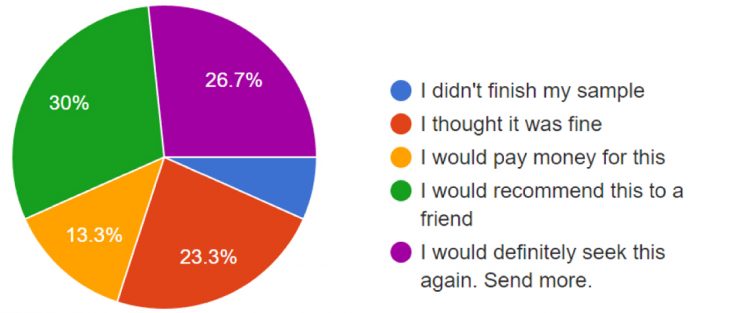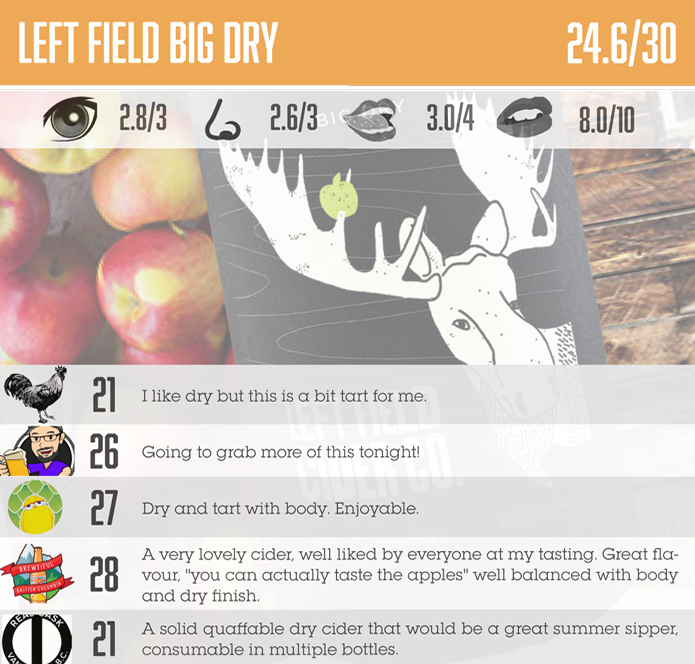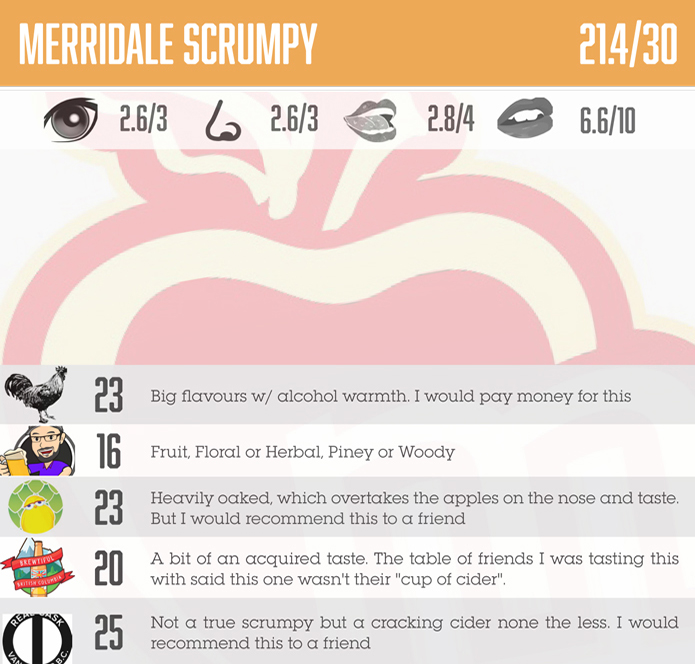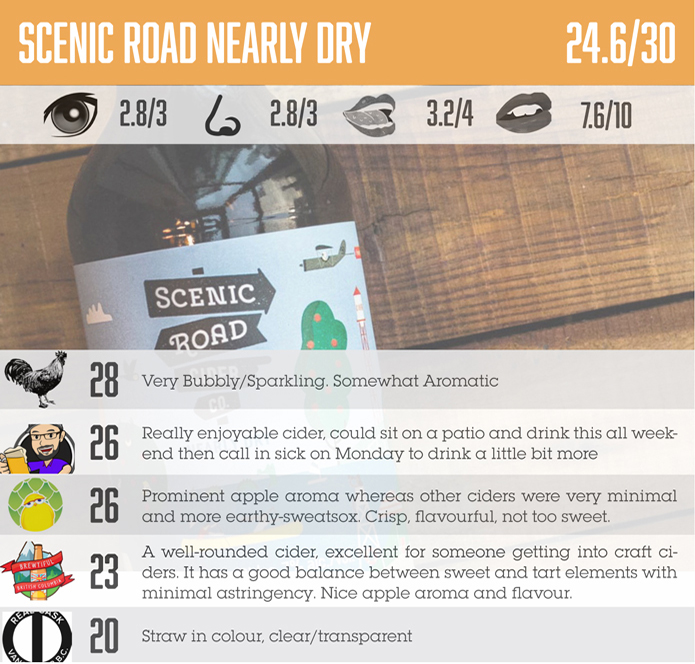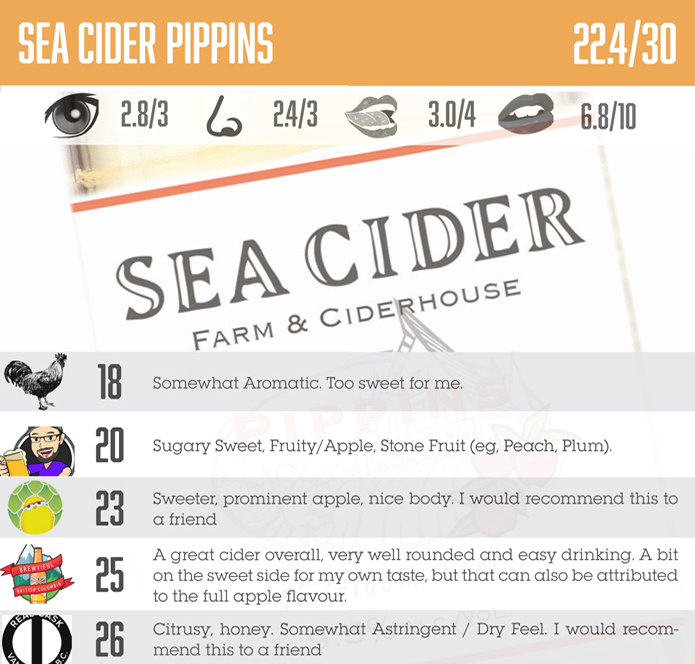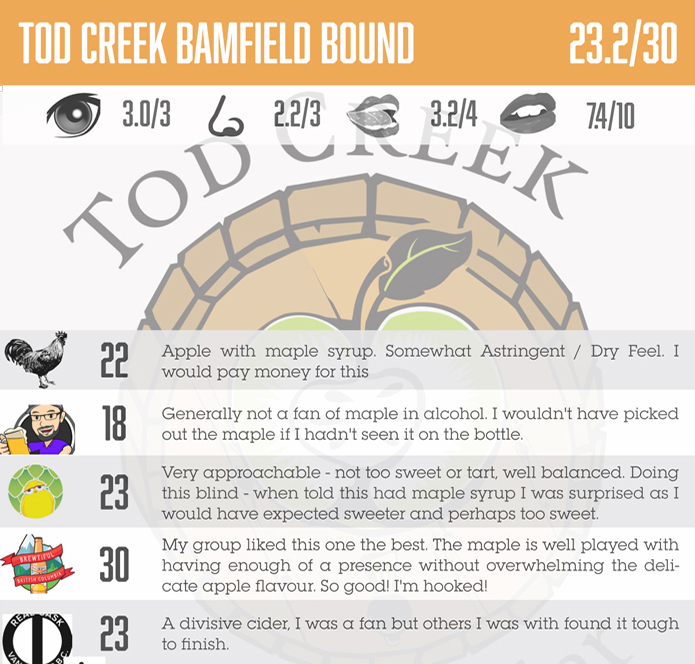It’s a Fall Harvest Cider Spotlight!
What’s Brewing presents its Tasting Panel feature in each quarterly magazine. This round, we decided to take a break from beer. In honour of the fall apple harvest, we proudly present a showcase of some of BC’s outstanding craft ciders.
Our tasting results are below. But first, let us tell you what we learned about enjoying cider.
Cider Tasting: a Primer, by Chelsea McDowell
 There is no one model against which to measure all ciders; rather, there is a wide range of styles within both modern and traditional categories. Some ciders can be funky, with notes of vinegar or barnyard, and there are barrel-aged, hopped, spiced, and even ice ciders. Most ciders we are familiar with are carbonated, but “still” ciders–common in Europe–are poured from a height above the glass to induce a natural effervescence.
There is no one model against which to measure all ciders; rather, there is a wide range of styles within both modern and traditional categories. Some ciders can be funky, with notes of vinegar or barnyard, and there are barrel-aged, hopped, spiced, and even ice ciders. Most ciders we are familiar with are carbonated, but “still” ciders–common in Europe–are poured from a height above the glass to induce a natural effervescence.
One common way to categorize cider is by sweetness.
- Dry has less than 0.5% residual sugar and more pronounced acidic and tannic flavours that enhance the astringent effect. Pair these ciders with pungent cheese or spicy dishes.
- Off-dry also has some acidic and tannic flavours, but with 1 to 2% sugar, it has a more balanced mouthfeel and complements a wider range of food, especially pork dishes and mild cheeses.
- Semi-dry and semi-sweet have sugar levels above 2% and can have strong fruit flavours, along with elements of caramel or honey and warming alcohol. Pair these with earthy dishes or blend into cider-based cocktails.
Keep temperature in mind when serving cider; higher-alcohol varieties benefit from a lower serving temperature, but low- ABV cider will be lackluster in aroma and flavor if served too cold.
- Appearance: note the colour, carbonation level, and presence of any sediment (in bottle-fermented ciders this will be naturally occurring)
- Aroma: cider aromas may include fresh orchard fruit, honey/caramel, nutty, grassy, spicy, or even smoky, depending on the yeast, fermentation methods, and apple variety used.
- Mouthfeel: roll the cider around in your mouth, experiencing the level of carbonation, density of the body, and level of astringency (a dry, puckering sensation).
- Taste: pay attention to sweetness, tartness, acidity, warmth (alcohol), caramel, astringency, and bitterness. The taste will evolve from the first sensation on the tongue to a lingering finish after swallowing.
A note on Perry: This popular beverage, similar to cider, is made from at least 90% pears. It has a slightly sweeter flavour profile because some of its sugars are indigestible by yeast. – Chelsea McDowell
Our Judges
 Our five volunteer beverage experts are:
Our five volunteer beverage experts are:
![]() Warren Boyer, BJCP-Certified brewer & community leader.
Warren Boyer, BJCP-Certified brewer & community leader.
![]() Mike Ansley aka The Beer Rater, offering an unfiltered view on the world of craft beer.
Mike Ansley aka The Beer Rater, offering an unfiltered view on the world of craft beer.
![]() Lynn McIlwee of Hops Canary: experienced beer event judge and homebrewer.
Lynn McIlwee of Hops Canary: experienced beer event judge and homebrewer.
![]() Chelsea McDowell of Brewtiful BC: experienced beer event judge and homebrewer.
Chelsea McDowell of Brewtiful BC: experienced beer event judge and homebrewer.
![]() Adam Chatburn owner of Real Cask Brewing: brewer, cellarman, and past President of CAMRA Vancouver.
Adam Chatburn owner of Real Cask Brewing: brewer, cellarman, and past President of CAMRA Vancouver.
The Ciders
Central City: Imperial Cider
Left Field: Big Dry
Merridale: Scrumpy
Scenic Road: Nearly Dry
Sea Cider: Pippins
Tod Creek: Bamfield Bound
These are just some of the many amazing ciders made in BC.
The above cider makers kindly provided their products for review via our partner. Legacy Liquor Store.
How judging was done
Our unsanctioned competition uses a Zagat-like 30-point rating with a weighted scale based loosely on the BJCP Scoresheet. Panellists are instructed to give an honest rating, not a sugar-coating. There is always something about each cider that at least one or two panelists will either like or dislike!
Adjusting for cider: Rating cider rather than beer means deviating from our regular criteria. This time round, instead of, say, Hoppy vs Malty, we’ve keyed in on Dry vs Sweet.
![]() Appearance: 3 points – Colour, Clarity, Turbidity, Legs.
Appearance: 3 points – Colour, Clarity, Turbidity, Legs.
![]() Aroma: 3 points – Aroma of fruit, etc.
Aroma: 3 points – Aroma of fruit, etc.
![]() Body: 4 points – Mouthfeel, Texture, Carbonation, Astringency
Body: 4 points – Mouthfeel, Texture, Carbonation, Astringency
![]() Flavour: 10 points – Sweetness, Fruitiness, Tartness, etc.
Flavour: 10 points – Sweetness, Fruitiness, Tartness, etc.
![]() Overall Impression: 10 points – Enjoyment, Flaws.
Overall Impression: 10 points – Enjoyment, Flaws.
TOTAL: 30 POINTS
And the winner is:
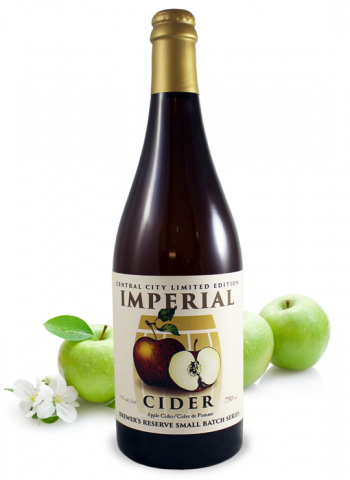
 The highest score went to Central City’s Imperial Cider. Somehow our panel, a group of beer drinkers, picked the cider from a beer company; go figure. It also happens to be the most expensive product in our list.
The highest score went to Central City’s Imperial Cider. Somehow our panel, a group of beer drinkers, picked the cider from a beer company; go figure. It also happens to be the most expensive product in our list.
It’s worth noting that this wasn’t a true “apples to apples” comparison because there was a range of cider styles involved. Sea Cider Pippins and Merridale’s Scrumpy in particular are known to be aimed at a specialty audience. Factoring that in, all products did quite well.
Note: neither What’s Brewing nor Legacy Liquor Store bear responsibility for the opinions expressed within, which are solely those of the individual panelists.
The Full Results
Overall category results: Cider
Impressions
Here are some stats pulled from the entire panel’s overall scores. Turns out the ciders trended more towards dry than sweet.

Enjoyment
To match up the pie chart in grayscale: start at top of legend and work clockwise from 45 degree mark (3 o’clock).
